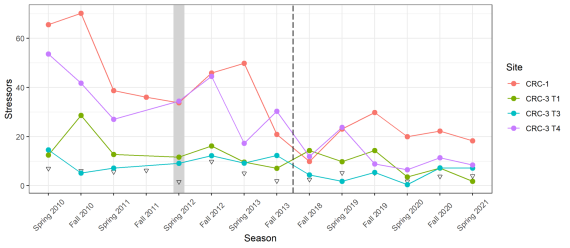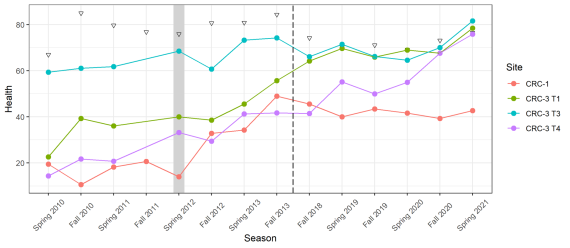Remediation and Restoration Project, Kingdom of Saudi Arabia
The goal of the Coastal Environments – Remediation and Restoration Project (CE-RRP) is to enhance ecological recovery of salt marshes and other habitats along the Gulf Coast of Saudi Arabia that were damaged in by the Gulf War oil spill in 1991. One of the keys to the success of the remediation contracts was the design, implementation, and monitoring of early field trials, to test and refine the initial designs for remediation. Based on these results, we completed the final designs and contracts for 21 remediation contracts, covering over 1,500 hectares of intertidal habitats that need further remediation, consisting of the following types of remediation approaches for salt marshes and tidal flats:
- Healthy channels facilitate the exchange of seawater through salt marsh habitat, and carry nutrients, seeds, and food. Therefore, tidal channels were excavated to restore the natural pattern of tidal flooding and draining across salt marshes. In addition, refreshed channel banks rapidly become habitat for crabs and other animals.
- Similar to tilling a garden, tilling in some coastal habitats will break up surface layers that prevent animals from burrowing, and plants from taking root. In addition, our observations show that tilled salt marsh substrate is colonized more rapidly than untilled substrate where a barrier (like algal mat or tar) was simply scraped from the surface.
- Finally, mangrove saplings were transplanted along the banks of some tidal channels. These transplanted saplings provide important habitat for burrowing animals, produce a root and rhizome system that may extend many meters beyond the base of the tree, and “reconnect” links between salt marshes and adjacent ecosystems by exporting organic matter (i.e. leaves).
We designed and are implementing a monitoring program at each of the remediation projects to detect changes in environmental indicators that are the direct result of, or affected by the remediation activities. We developed a Multi-Metric Index approach that combines a wide range of field and laboratory measures into single values representing both Ecosystem Health and Stressor conditions. Use of these indices allows comparisons to be made across all marsh sites across the project area, as well as within each specific site as it responds to restoration activities over time.

Figure 1. Historic monitoring data plotted as Stressor (top) and Ecosystem Health (bottom) MMI for salt marsh sites where remediation works were completed by spring 2012. Downward-facing triangles represent mean values for Comparison sites. The black line indicates the break in monitoring between CE-RRP (end of 2013) and CLTMP data (fall 2018). The shaded season is the first monitoring event following remediation.
Figure 2. Tilled areas adjacent to an excavated channel (inside the yellow line) are rapidly colonized by high numbers of burrowing crabs. Excavated tidal channels (Inset A) improve the drainage and flushing of the marsh. Mangroves are planted along the banks of channels (Inset B) providing a seed source to populate adjacent areas.


